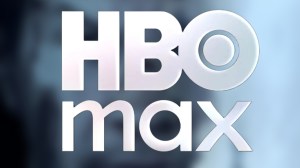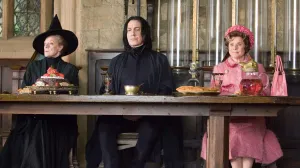The Death of Superman, out today on Blu-ray and DVD, is rather explicitly an attempt by Warner Bros. Animation to right a wrong created by the underwhelming semi-spectacle of Superman: Doomsday, their first DC Universe direct-to-DVD animated feature film, which adapted the same comic book storyline.
Videos by ComicBook.com
Starring Jerry O’Connell as Superman, Rebecca Romijn as Lois Lane, and Rainn Wilson as Lex Luthor, The Death of Superman is a loose adaptation of “The Death of Superman” and “Funeral For a Friend,” two of DC’s best-selling event stories of the ’90s. A sequel, which addresses Superman’s return from the grave and is titled Reign of the Supermen, is coming next year.
That alone — dealing with the death and return separately — is addressing a major criticism of Superman: Doomsday, and it was the source of a lot of excitement when the pair of movies were announced. Now that we have seen the first half of the duology, what is the better package: Superman: Doomsday, or The Death of Superman? Well, we will say that not everything falls on the same side of the coin.
The Story

In Superman: Doomsday, the story had to do a lot of heavy lifting. In the course of about 70 minutes, they had to introduce Doomsday, kill Superman, and bring him back in a narratively satisfying way.
Ultimately, it was kind of a dud. While fans at the time were largely forgiving of its flaws because they were so excited to see one of their all-time favorite comic book stories brought to life as an animated feature film, there was simply not enough time to satisfactorily do everything they had to do in the time they had, and it ends up feeling like a piece of junk food: stuffed to bursting with something that isn’t any good for you.
A big thing: while the comics relied on a ratcheting up of the tensions throughout the storyline to keep the “one big fight scene” of the Superman/Doomsday throwdown from getting monotonous, Superman: Doomsday did not have time for that. Instead, they got Doomsday into Metropolis as quickly as possible and put the pair into a fight that was brutal but hardly unparalleled before Superman fell.
The return, too, was unambitious and a complete divergence from the comics. The latter is not inherently a bad thing, but the former is — especially when considering that The Reign of the Supermen is one of the most ambitious Superman stories of the ’90s.
The Death of Superman only has to deal with the Doomsday battle, giving room for the whole thing to breathe, giving Superman (and Lois, and Bibbo, and others) some solid character moments that do not have to be quite as cramped or forced in order to fit the time.
Advantage: The Death of Superman
The Story, Part II: The Changes

Both versions make significant changes from the comics, although most of the changes were different.
In Superman: Doomsday, Doomsday originated from a vault far below the ground (like in the comics), but his origin was revealed before the first fight with Superman even happened (not like the comics). It went the other way in The Death of Superman, with Doomsday’s past remaining a mystery but his arrival being via meteor shower.
In The Death of Superman, the Justice League of the comics — Fire, Ice, Guy Gardner, Blue Beetle, Booster Gold, Bloodwynd — is replaced by the “big guns” Justice League common to the current crop of DC animated movies, while Superman: Doomsday sees the League omitted entirely, the Doomsday fight not providing enough real estate to introduce and defeat them without stealing the show from Superman completely.
Where The Death of Superman really earns points is in its fidelity to the parts of the source material to which they can realistically have fidelity: the presences of Bibbo, Dabney Donovan, Maggie Sawyer, Dan Turpin, and even Easter eggs like a LexCorp employee named for inker Doug Hazelwood make the whole thing feel like a love letter to the comics, rather than just a cash-grab to be packaged in the back cover of a reprint of DC’s best-selling Superman book.
Advantage: The Death of Superman
The Acting

James Marsters made for a great Lex Luthor in Superman: Doomsday, and the casting was on the whole quite good…but both the performances themselves and the casting in general felt a little bit like somebody trying a little too hard to be tough and cool.
Adam Baldwin in particular is a tough one: his Superman has power and authority, but he seems ill-suited to playing the good-natured Clark Kent, and ill-at-ease when trying to approximate a voice someone might make while smiling.
This plays to Baldwin’s type, of course: he generally plays hardass characters and as often as not the comedy comes from playing his straight man against more traditional comedy.
Lois Lane (Rebecca Romijn) is a huge step up from Anne Heche, who was admittedly hampered by a script which, once feels a touch too old-school for a modern Lois. Her delivery matches that, with a Hudsucker Proxy-style old school lady reporter vibe that feels a little out of sync with a largely “realistic” vocal palette for the cast.
Advantage: The Death of Superman
Characterization

In a kind of dead zone hidden between the story and the performances lies characterization — something particularly important to adapting ongoing superhero stories.
If you don’t agree, just ask Zack Snyder how much trouble he has had for depicting Superman in a way that is not in keeping with the expected characterization.
While The Death of Superman has a Superman who is maybe a little too uncertain of himself and overly cautious, Superman: Doomsday has a more serious issue: in a story that served as one of the defining moments of the post-Crisis on Infinite Earths era, Superman himself seems to be channelling Silver Age silliness at times — or at least Grant Morrison’s neo-Silver Age All-Star Superman.
Lois is similar: here, they play up the love triangle between Superman, Lois, and Clark — with Lois and Superman even hooking up before she knows that he is Clark, and her trying to corner him into telling her his secret identity afterwards.
The one area where Superman: Doomsday has a clear advantage is in Lex Luthor, who very much played up to the form of his ’90s status quo (except the whole thing where he was an Australian clone, but realistically that will never become part of the movies unless it is a story in and of itself). Marsters was dead-on for the cold, calculating mastermind with a short fuse and the willingness to straight-up shoot his right hand man (woman) in order to cover up a crime gone bad.
Pushing beyond the question of emo Superman versus a Superman with no Clark, though, the real place where Superman: Doomsday crossed a rubicon was in Superman’s decision to kill his evil clone. Not only does he kill the guy, but more jarringly, he seems quite pleased with himself for doing so. Yes, it’s self-defense, and yes, Superman kills every so often in the comics and in other media. But really? This one felt a little too gleeful to be really in keeping the the Man of Steel.
Advantage: The Death of Superman
The Animation

On a rewatch, it is actually somewhat surprising how well Superman: Doomsday holds up in the animation department. It set a high bar for the DC Universe animated movies, and while there have been some disappointments in the bunch, all in all Warner Bros. Animation has done a solid job with them.
There is a level of evolution that has happened, which gives The Death of Superman the edge, but taken in the context of the time it was created, Superman: Doomsday is a sharp-looking film.
Both movies have some odd choices as it pertains to character designs; Doomsday’s look (and especially his green suit) in The Death of Superman is baffling, while Lois is basically built like a Q-tip in Superman: Doomsday.
Superman: Doomsday featured a Metropolis redesigned for the DC Universe movies with an eye toward distinguishing it from the art-deco fantasy of the DC Animated Universe (if that sounds smart, it’s only because we’re literally quoting Bruce Timm from the movie’s commentary track), and it worked. Not only was it a nice redesign, but the city itself felt like it felt in the comics of the late ’80s and early ’90s.
Advantage: The narrowest of edges goes to Superman: Doomsday on this one.
Combat
This one isn’t even close. The Death of Superman not only takes its time, working with elaborate fight choreography and lovingly-rendered fight scenes (in fact, one of the talking heads on the making-of featurette is an MMA/martial arts instructor who apparently advised on the movie), but it has to do so while incorporating a number of styles from a number of characters, given that the Justice League appears.
Superman: Doomsday is a lot of blunt force trauma — in both the Superman/Doomsday fight and the Superman/Superclone fight, it’s mostly two really powerful guys throwing haymakers or dropping giant objects on one another, mostly in a deliberate fashion and with minimal violence or panache.
Advantage: The Death of Superman
Bonus Features

Again: absolutely no contest, but this time…going the other way.
On The Death of Superman‘s Blu-ray, there is a documentary about the Doomsday fight, which features talking-head interviews from the aforementioned martial arts instructor along with a couple of the filmmakers and comic book contributors Jon Bogdanove (who drew Superman: The Man of Steel during the Doomsday era) and Mike Carlin (who was the group editor at the time). Bolstering that documentary are a preview of The Reign of the Supermen, pair of episodes of Legion of Super-Heroes dealing with Imperiex, a villain created in one of the first big Superman crossover stories in the time after the last of the “Death of Superman” creators left the Super-titles.
Compare that to the avalanche of special features on the Superman: Doomsday Blu-ray (a menu screen seen above), which includes not only a commentary track and looks ahead at two then-upcoming movies (Justice League: The New Frontier and Wonder Woman), but four episodes of related animated series, a much longer and more slickly-produced documentary that takes a holistic approach to looking at the Death and Return of Superman and features interviews with probably a dozen contributors and scholars, and a filmmaker’s commentary track — which this old video store jockey sees as the gold standard for a home video bonus feature.
And while it did not come out at the time of the film’s release, a few years back they made a reissue available that came slipped into the back cover of a hardback edition of The Death of Superman collected edition. Unless you wanted to pay upwards of $80 for an omnibus edition, though, The Death of Superman had never been made available in hardcover before, meaning that one of the movie’s “special features” was a fine-looking new edition of the comic, in the vein of something fans had long asked for.
Advantage: Superman: Doomsday
Lois and Clark

Neither movie has Lois and Clark engaged, as they were in the comics, and in both cases they are dealing with Superman grappling with commitment issues.
In Superman: Doomsday, the traditional love triangle is featured, with Lois having decided to secretly date Superman (who will not reveal his true identity to her or publicly acknowledge their relationship, meaning that they have all of their dates either at her apartment or at the Fortress of Solitude). Both she and Perry White make frequent references to the old idea of Lois being constantly rescued by Clark, and Lois Lane — feminist icon and Pulitzer Prize-winner — tells Jimmy Olsen to stop acting “like a girl” at one point.
So…yeah. Other than a nice moment between Lois and Ma Kent, the Lois and Clark aspect of Superman: Doomsday is kind of a hot mess — not least of all because she is photographed by the press kissing Superman after his return from the grave, and then he next day is at the office (a public space) when Clark finally comes clean about his secret and she immediately starts kissing him, potentially either creating a tabloid firestorm about Lois cheating on Clark with Superman, or worse, outing his identity to the world.
In The Death of Superman, Clark has a more traditional relationship with Lois; they are dating, they get along and clearly respect each other. She is a bit of a nag, but only because he is so very bad about hiding that he has something to hide. This, of course, builds to the idea that he has to reveal his identity to her again — but this time he does so privately, and before his death, something that fundamentally “upgrades” their relationship just as he is about to head off and meet his doom.
Neither is perfect, and both could take some notes from the post-Crisis comics they are ostensibly adapting, but…
Advantage: The Death of Superman
The Music

There are times when the score for Superman: Doomsday is effective, but overwhelmingly, the adjective we would use is “generic.” Most scenes feel like a temp score — something so on the nose that it has to just be stock audio sitting there, waiting for somebody more gifted to come in and give the thing a spin. The Superman theme itself for the movie isn’t bad, and there are certainly moments when the generic mid-2000s action movie score is well-used…but it’s just kind of dry.
The Death of Superman‘s is not brilliant or anything, but it is a serious step up.
Part of that is likely down to the conditions under which they were created.
Superman: Doomsday was the first of its kind, a PG-13, feature-length movie meant to be as distinct as possible from the Superman: The Animated Series and Justice League Unlimited series that came before it. The end result was a soundtrack that was fiercely trying to carve its own path while simultaneously representing classic and familiar characters and themes.
By the time The Death of Superman came around, there were another decade’s worth of music to fall back on, an established “feel” to the shared universe of DC’s animated films, and frankly no fear of feeling too similar to Justice League, meaning that (as in the Justice League movie), there were times where the music felt like it was sampling some of the best of what came before it.
Advantage: The Death of Superman








